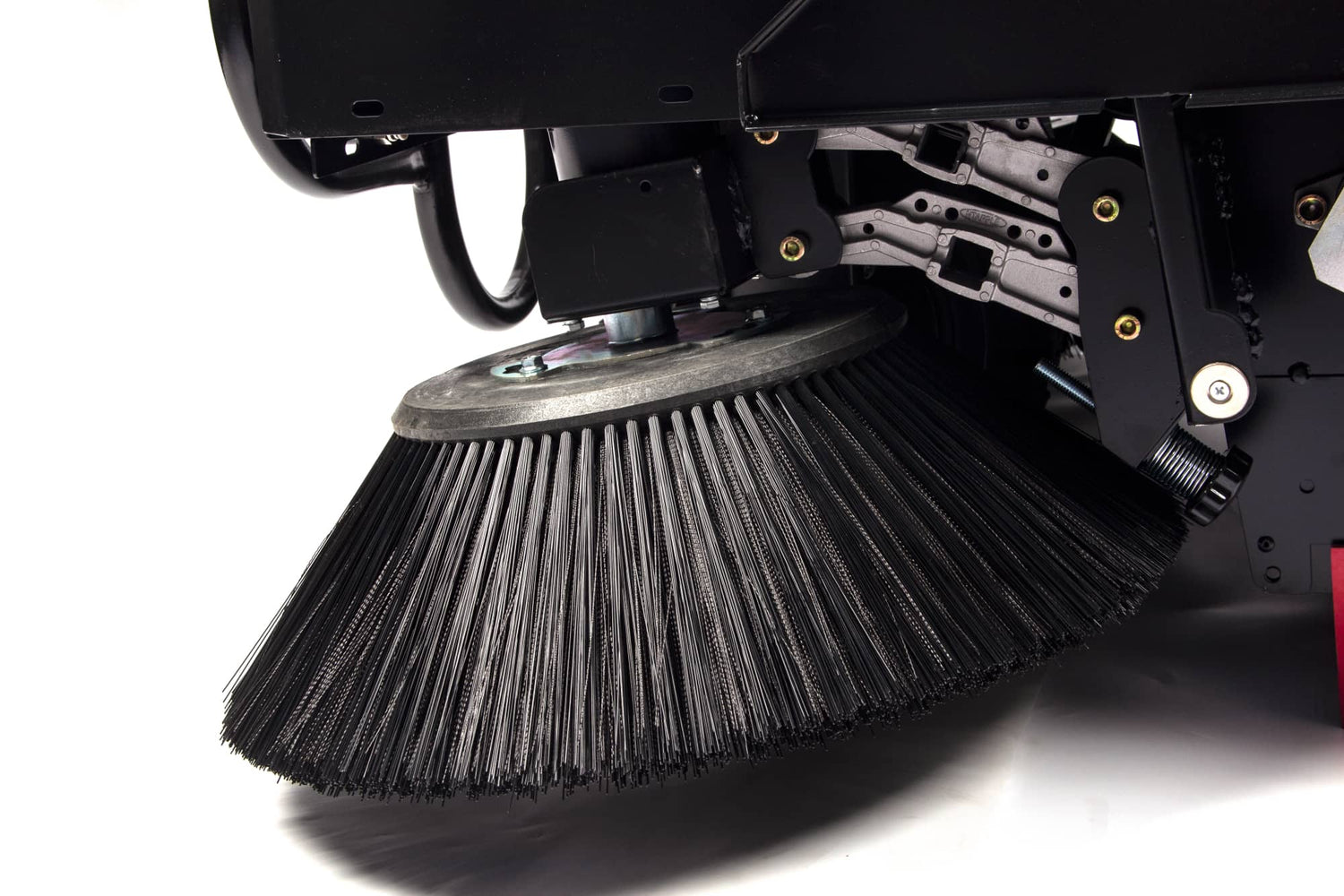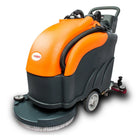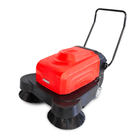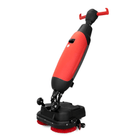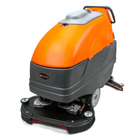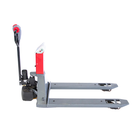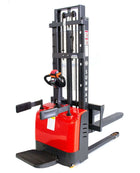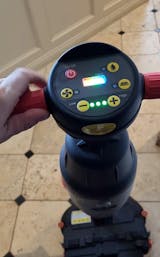Struggling to find the right industrial vacuum cleaner for your facility? You're not alone.
I've spent years working with industrial cleaning equipment, and I can tell you that choosing the best industrial vacuum cleaners can make or break your facility's cleaning efficiency and workplace safety. Whether you're dealing with metal shavings in your workshop or fine dust on your production line, the right vacuum isn't just a purchase—it's an investment in your operation's future.
Let me walk you through everything you need to know.
Why Industrial Vacuum Cleaners Matter More Than You Think
Here's something most facility managers don't realize until it's too late: regular shop vacs simply can't handle industrial environments. I've seen countless businesses waste money on underpowered equipment that breaks down within months.
Industrial vacuum cleaners are built differently. We're talking heavy-duty steel construction instead of plastic, motors that can run for 10,000+ hours continuously, and filtration systems that capture particles you can't even see. These machines don't just clean—they protect your investment, your workers, and your bottom line.
The industrial vacuum cleaner market is booming. Projections show growth from $722.7 million in 2025 to $1.32 billion by 2037. That's a 5.1% annual growth rate driven by stricter safety regulations and automation demands.
Understanding Industrial Vacuum Cleaner Types
Not all industrial vacuums are created equal. Let me break down the main categories so you can zero in on what works for your operation.
Wet and Dry Industrial Vacuum Cleaners
These are your versatile workhorses. I always recommend wet/dry vacuums for facilities that deal with multiple types of debris. They handle everything from sawdust to coolant spills without missing a beat.
The beauty of wet and dry vacuum technology is flexibility. One minute you're cleaning up water from a leak, the next you're tackling metal chips from your CNC machine. No switching equipment, no downtime.
Heavy-Duty Dust Extractors
When you're dealing with serious dust issues—think construction sites, woodworking shops, or manufacturing facilities—you need a dedicated dust extractor. These units are designed specifically for fine particulate matter that can damage lungs and equipment alike.
HEPA Filtration Industrial Vacuums
Here's where things get serious. Industrial vacuum cleaners with HEPA filtration capture 99.97% of particles as small as 0.3 microns. If you're handling hazardous materials, working in pharmaceutical manufacturing, or need to comply with strict air quality standards, HEPA filtration isn't optional—it's mandatory.
Continuous Duty Industrial Vacuum Systems
For operations running 24/7, you need a vacuum that never quits. Continuous duty vacuums with three-phase motors are built for this exact scenario. They're more expensive upfront, but the energy efficiency and durability pay for themselves.
Real-World Application: The Sanitmax SM100 Industrial Vacuum
Let me tell you about a vacuum that's been turning heads in 2025: the Sanitmax SM100 Industrial Vacuum Cleaner.

This 26.4-gallon (100-liter) beast is what I call a "no-compromise" machine. Here's what makes it stand out in the crowded industrial vacuum market:
Powerful 2100W Motor Performance The SM100 doesn't mess around with underpowered motors. That 2100-watt motor delivers serious suction—we're talking 212 CFM (cubic feet per minute) of airflow. That's enough to handle heavy debris, fine dust, and everything in between.
HEPA Filtration with Reverse Pulse Technology This is where the SM100 really shines. The HEPA filtration system means you're meeting OSHA standards for air quality. But here's the game-changer: the reverse pulse filter cleaning system. Instead of stopping work to clean filters manually, the SM100 automatically blasts compressed air backward through the filter, dislodging trapped particles. Your uptime just went through the roof.
100-Liter Capacity = Less Emptying With a 26.4-gallon (100-liter) tank, you're not constantly stopping to empty the canister. For large facilities or heavy-duty applications, this capacity means more cleaning, less maintenance. Time is money, and the SM100 respects both.
110V Convenience Unlike some industrial vacuums that require special electrical hookups, the SM100 runs on standard 110V power. Plug it in anywhere and you're good to go. No electrician needed, no downtime for installation.
Value Proposition Looking at the pricing, the SM100 hits that sweet spot between performance and affordability. You're getting industrial-grade features without the industrial-sized price tag. When vendors run promotions, you can often find significant discounts that make this an even smarter investment.
Who Should Buy the SM100?
I recommend the Sanitmax SM100 for:
- Manufacturing facilities dealing with metal chips and coolant
- Woodworking shops battling sawdust
- Construction companies needing reliable dust extraction
- Warehouses requiring regular maintenance cleaning
- Automotive shops handling oil and debris
The SM100 solves the classic problem: you need industrial power but don't want to break the bank or deal with complicated maintenance routines.
Key Features to Look for in the Best Industrial Vacuum Cleaners
Let me share what I look for when evaluating industrial vacuums. These features separate the winners from the waste of money.
Motor Power and Suction Strength
Don't be fooled by marketing hype. Look at actual performance metrics:
- Motor wattage: 1400W minimum for light industrial, 2000W+ for heavy-duty
- Suction pressure: Measured in kPa (kilopascals). You want 20-25 kPa for general use, 35-50 kPa for demanding applications
- Airflow (CFM): Higher CFM means better pickup of large debris
Tank Capacity for Industrial Use
Match tank size to your operation:
- 10-20 liters: Light industrial, frequent emptying
- 20-60 liters: Medium operations, balanced capacity
- 60-100+ liters: Heavy-duty use, extended runtime (like the SM100's 100L capacity)
Bigger isn't always better. An oversized tank is harder to maneuver and empty. Right-sized is better.
Filtration System Quality
This is non-negotiable for industrial environments:
- Standard filters: Good for general debris
- HEPA filters: Required for fine dust, hazardous materials
- Multi-stage filtration: Extends filter life and improves air quality
The reverse pulse filter cleaning technology (found in the SM100 and similar units) is a massive time-saver. Automatic filter cleaning means you're not stopping production to maintain your vacuum.
Durability and Build Quality
Industrial vacuums take a beating. Look for:
- Steel or stainless steel construction (not plastic)
- Heavy-duty wheels and casters
- Reinforced hoses that resist punctures
- Accessible service points for maintenance
Industrial Vacuum Cleaners for Construction Sites
Construction environments are brutal on equipment. Here's what matters:
You need explosion-proof capabilities if you're dealing with combustible dust. Many construction applications involve materials that can ignite—silica dust, wood dust, metal particles. ATEX-certified vacuums are designed to prevent sparks and safely handle these materials.
Look for vacuums with long hoses (20+ feet) and robust wheels. Construction sites aren't smooth, and you need equipment that can navigate debris-filled floors.
Wet Dry Vacuum for Industrial Applications
The versatility of wet/dry vacuums makes them incredibly popular in industrial settings. Here's why they're worth considering:
A quality wet dry vacuum eliminates the need for multiple machines. Spill on aisle five? Grab the same vacuum you use for dust collection. That's efficiency.
Key considerations for wet/dry industrial vacuums:
- Float shut-off valves (prevents liquid from reaching the motor)
- Corrosion-resistant tanks (stainless steel is ideal)
- Separate wet/dry filtration (some units require filter changes between uses)
Heavy Duty Vacuum Cleaner for Manufacturing
Manufacturing facilities have unique demands. Your vacuum needs to:
Handle Metal Chips and Swarf Standard vacuums choke on metal shavings. Industrial units designed for metalworking have reinforced impellers and can handle sharp, heavy particles without damage.
Work with Coolant and Oils Many manufacturing processes use lubricants. Your vacuum needs to separate coolant from chips efficiently. Look for models with tangential intake ports that handle strings and clumps of oil-soaked material.
Integrate with Machinery The best manufacturing vacuums can connect directly to CNC machines, grinders, and other equipment. This prevents debris buildup at the source.
Commercial Vacuum vs. Industrial Vacuum: Know the Difference
People often confuse these categories. Let me clear this up:
Commercial vacuums are built for offices, hotels, and retail spaces. They handle light-to-moderate use on carpets and hard floors. They're portable, often upright or canister-style, and designed for intermittent use.
Industrial vacuums are engineered for harsh environments. They're heavier, more powerful, and built to run continuously. Industrial units handle materials that would destroy a commercial vacuum in hours: metal chips, concrete dust, hot materials, liquids, and hazardous substances.
If you're running a facility with real production, skip the commercial-grade equipment. You'll just end up replacing it repeatedly. Go industrial from the start.
Top Brands and Models to Consider in 2025
Based on my experience and current market offerings, here are the standout options:
Sanitmax SM100
As we discussed earlier, this 100-liter powerhouse with HEPA filtration and reverse pulse cleaning offers exceptional value. The 2100W motor and 212 CFM airflow put it in the same performance class as vacuums costing significantly more.

SM100 Industrial Vacuum Cleaner
Heavy Duty · HEPA Filtration · 100L
Nilfisk Industrial Vacuums
Nilfisk has earned its reputation for durability and performance. Their ATEX-certified models are go-to choices for hazardous environments. Expect to pay premium prices, but you get premium engineering.
Shop-Vac Pro Series
For lighter industrial applications, Shop-Vac's professional line offers solid performance at accessible price points. Good for smaller facilities or supplementary cleaning tasks.
Makita and Milwaukee Industrial Extractors
If you're already invested in these tool ecosystems, their industrial extractors offer good integration and familiar service networks. Particularly strong for construction and renovation work.
Budget Considerations: Industrial Vacuum Cleaner Prices
Let's talk money. Industrial vacuums range from a few hundred dollars to several thousand. Here's how to think about pricing:
Entry Level ($300-$800) Suitable for light industrial use, smaller facilities, or supplementary cleaning. Limited capacity and features but gets the job done for basic applications.
Mid-Range ($800-$2,000) This is the sweet spot for most operations. The Sanitmax SM100 falls into this category. You get professional-grade performance, decent capacity, and features like HEPA filtration without breaking the bank.
Premium ($2,000-$5,000+) Heavy-duty continuous-use systems, specialized applications (explosive atmospheres, pharmaceutical cleanrooms), or central vacuum installations. These are long-term investments for demanding environments.
Don't cheap out on industrial vacuums. A $500 vacuum that breaks in six months costs more than a $1,500 vacuum that runs for ten years. Calculate total cost of ownership, not just purchase price.
Maintenance Tips for Long-Term Performance
The best industrial vacuum cleaner is only as good as its maintenance. Here's how to keep your equipment running:
Regular Filter Maintenance
- Empty or replace disposable filters based on use (weekly for heavy use)
- Wash reusable filters monthly
- Inspect HEPA filters quarterly
- With reverse pulse systems like the SM100's, you'll extend filter life significantly
Tank and Hose Care
- Empty tanks before they're completely full (improves suction)
- Check hoses for cracks or holes monthly
- Clear blockages immediately
- Clean tank interiors to prevent buildup
Motor Protection
- Never run dry vacuums without filters installed
- Let motors cool between intensive sessions
- Keep air intakes clear
- Monitor for unusual sounds (grinding, squealing)
Professional Servicing
Schedule annual professional maintenance for industrial units. Technicians can catch problems before they become expensive failures.
How to Choose the Right Industrial Vacuum for Your Facility
Here's my step-by-step process for selecting an industrial vacuum:
Step 1: Assess Your Needs
- What materials will you vacuum? (dry, wet, hazardous, hot, sharp?)
- How often will you use it? (intermittent or continuous?)
- How large is your cleaning area?
- Do you have regulatory requirements? (OSHA, EPA, industry-specific?)
Step 2: Calculate Required Capacity Match tank size to your cleanup volume and emptying frequency. A 100-liter tank like the SM100's works well for facilities generating significant daily waste.
Step 3: Determine Power Requirements More power isn't always better, but underpowered units frustrate users and slow productivity. For general industrial use, 1800-2200W hits the optimal balance.
Step 4: Select Appropriate Filtration
- Standard: General dust and debris
- HEPA: Fine particles, allergens, hazardous materials
- ULPA: Pharmaceutical, semiconductor, ultra-clean applications
Step 5: Consider Special Features
- Reverse pulse cleaning (huge time-saver)
- Variable speed control
- Tool activation (vacuum turns on when connected power tool starts)
- Noise reduction (important for occupied spaces)
Step 6: Check Accessories and Attachments Make sure the vacuum includes or offers:
- Multiple nozzle sizes
- Extension wands
- Brush attachments
- Specialty tools for your industry
Step 7: Evaluate Warranty and Support Good manufacturers stand behind their products. Look for:
- Minimum 1-year warranty (2-3 years is better)
- Available replacement parts
- Accessible customer service
- Local service centers or authorized repair shops
Safety Considerations for Industrial Vacuums
Industrial vacuums aren't just cleaning tools—they're safety equipment. Here's what you need to know:
OSHA Compliance
The Occupational Safety and Health Administration has specific requirements for vacuums used with hazardous materials:
- HEPA filtration for lead, asbestos, silica dust
- Proper disposal procedures for collected materials
- Worker training on safe operation
- Regular equipment inspection and maintenance
Fire and Explosion Prevention
Never use standard vacuums for combustible dust. Materials like metal powder, wood dust, and certain chemicals can ignite from static electricity or motor sparks. Use only ATEX-certified explosion-proof vacuums in these applications.
Electrical Safety
- Ensure proper grounding
- Use GFI-protected outlets in wet areas
- Don't exceed cord length ratings
- Inspect cords regularly for damage
Ergonomics
Industrial vacuums can be heavy. Look for:
- Comfortable handle heights
- Smooth-rolling wheels
- Balanced weight distribution
- Backpack options for extensive handheld use
Frequently Asked Questions About Industrial Vacuum Cleaners
What's the difference between an industrial vacuum and a shop vac?
Industrial vacuums are built for continuous heavy-duty use with more powerful motors (typically 1800W+), larger capacities (50-100+ liters), and superior filtration systems. Shop vacs are lighter-duty units suitable for occasional workshop cleaning. Industrial vacuums feature steel construction, advanced filtration like HEPA, and can handle hazardous materials—capabilities shop vacs lack.
How much suction power do I need for industrial cleaning?
For general industrial applications, look for 20-25 kPa suction pressure and 150-250 CFM airflow. Heavy-duty applications like metal chip collection need 30-50 kPa. The Sanitmax SM100's 212 CFM rating handles most industrial scenarios effectively. Remember: balanced suction and airflow outperform just raw power.
Are HEPA filters necessary for all industrial applications?
HEPA filters are required when handling fine dust (under 10 microns), hazardous materials (lead, asbestos, silica), or when regulatory compliance demands them (pharmaceutical, food processing). For general debris collection without fine particles, standard filtration is adequate. However, HEPA filtration improves overall air quality and protects workers' respiratory health.
How often should industrial vacuum filters be cleaned or replaced?
This depends on use intensity. Heavy daily use requires weekly filter inspection and cleaning. With reverse pulse filter cleaning systems (like the SM100's), automatic cleaning extends intervals significantly—monthly inspection is often sufficient. HEPA filters typically need replacement every 6-12 months, or when suction noticeably decreases despite cleaning.
Can industrial vacuums handle hot materials?
Some specialized industrial vacuums can safely collect hot materials up to 200°C (392°F). These units feature heat-resistant hoses, fireproof filters, and thermal protection systems. Standard industrial vacuums should never be used on hot materials. Always check manufacturer specifications—using the wrong vacuum on hot debris is a serious fire hazard.
What capacity tank do I need for my facility?
Calculate based on debris volume and emptying frequency. Small operations (under 500 sq ft) work fine with 20-30 liter tanks. Medium facilities (500-2000 sq ft) benefit from 40-60 liters. Large operations or heavy debris generation (2000+ sq ft) should consider 80-100+ liter capacities like the SM100's 100-liter tank. Bigger tanks mean less emptying but reduced portability.
Should I choose a wet/dry vacuum or dry-only for manufacturing?
If your facility uses coolants, lubricants, or experiences any liquid spills, choose wet/dry capability. Manufacturing environments often have unexpected liquids—a wet/dry vacuum prevents downtime from switching equipment. The slight added cost buys tremendous flexibility. Dry-only vacuums work if you absolutely never encounter liquids and want marginally simpler maintenance.
How do I maintain suction power over time?
Regular maintenance is key: empty tanks before they're full (ideally at 75% capacity), clean or replace filters on schedule, check for hose clogs or cracks, and keep motor air intakes clear. Reverse pulse filter cleaning systems dramatically reduce maintenance burden. Annual professional servicing catches problems early. Most suction loss comes from dirty filters or clogged hoses—both easily preventable.
What's the typical lifespan of an industrial vacuum cleaner?
Quality industrial vacuums last 8-15 years with proper maintenance. Heavy-duty units with 10,000+ hour-rated motors can exceed this. Key factors affecting lifespan: build quality (steel vs. plastic), motor type (brushless motors last longer), usage intensity, and maintenance consistency. Budget units might last 3-5 years. The SM100's robust 2100W motor and steel construction suggests 10+ year service life.
Are cordless industrial vacuums powerful enough for serious work?
Current battery technology limits cordless industrial vacuum performance. While cordless units work for light tasks and spot cleaning, they can't match corded units' sustained power for heavy industrial applications. Battery life (typically 20-40 minutes) and reduced suction make cordless impractical for all-day industrial use. Corded vacuums remain the professional standard for demanding environments.
Making Your Final Decision
Choosing the best industrial vacuum cleaner comes down to matching capabilities to your specific needs. There's no single "best" vacuum—only the best vacuum for YOUR operation.
If you're looking for a versatile, powerful option that handles most industrial applications without requiring a second mortgage, the Sanitmax SM100 deserves serious consideration. That 100-liter capacity, 2100W motor, HEPA filtration with reverse pulse cleaning, and 110V convenience package makes it a strong contender in the mid-range category.
For specialized needs—explosive atmospheres, pharmaceutical cleanrooms, continuous 24/7 operation—you'll want to explore premium options from Nilfisk, VAC-U-MAX, or other specialized manufacturers.
Whatever you choose, remember: the best industrial vacuum cleaner is the one that's still working reliably five years from now. Invest in quality, maintain it properly, and your vacuum will pay for itself many times over through improved safety, efficiency, and uptime.
Take Action Today
Ready to upgrade your facility's cleaning capabilities? Here's what to do next:
- Assess your current cleaning challenges: Document what's not working with your existing equipment
- Calculate your requirements: Use the guidelines above to determine capacity, power, and filtration needs
- Set your budget: Remember total cost of ownership, not just purchase price
- Research specific models: Compare specs for units in your target range (like the SM100)
- Check for promotions: Industrial vacuum prices can fluctuate significantly during promotional periods
- Plan for maintenance: Factor in filter replacements, accessories, and service costs
The right industrial vacuum transforms cleaning from a frustrating chore into a smooth, efficient operation. Your workers will thank you, your equipment will last longer, and your facility will be safer and more productive.
Don't settle for underpowered equipment that creates more problems than it solves. Invest in the best industrial vacuum cleaner for your needs, and watch your operation run smoother than ever.
Looking for more industrial equipment guides or technical support? please contact sales@sunmaxus.com or support@sanitmax.com.









